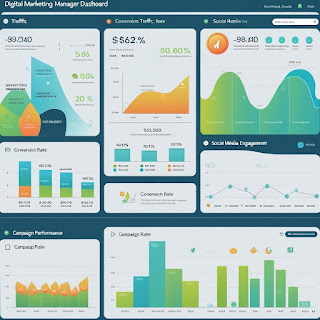-
Wider Reach:
Digital marketing allows businesses to reach a global audience regardless of size or location. With billions of users on platforms like Google, Facebook, and Instagram, companies can connect with potential customers worldwide. -
Cost-Effective:
Compared to traditional marketing methods like TV, print, or radio ads, digital marketing is more affordable and offers better ROI (return on investment), especially for small and medium-sized enterprises. -
Targeted Marketing:
Advanced tools and data analytics allow marketers to target specific demographics, interests, behaviors, and locations, increasing the chances of conversion. -
Measurable Results:
Using tools like Google Analytics and Facebook Insights, businesses can track campaign performance in real-time and adjust strategies accordingly. -
Improved Customer Engagement:
Social media, email, and content marketing facilitate two-way communication with customers, building trust and long-term relationships. -
Higher Conversion Rates:
With the ability to target the right audience at the right time, digital marketing often leads to higher conversion rates compared to traditional methods. -
Brand Development:
Consistent and strategic digital presence helps in building brand identity and recognition effectively.
-
1990s – Birth of the Internet:
Early digital marketing involved basic websites and email campaigns. -
Early 2000s – SEO and Search Engines:
The rise of Google led to SEO becoming essential for visibility. Pay-Per-Click (PPC) advertising also began to grow. -
Mid-2000s – Social Media Emergence:
Platforms like Facebook, YouTube, and Twitter transformed communication. Businesses started leveraging social media for marketing and customer engagement. -
2010s – Mobile and Content Marketing Boom:
Smartphones made mobile marketing essential. Content marketing, blogs, and influencer marketing gained traction. -
Late 2010s to Present – Data-Driven & AI Marketing:
Use of big data, machine learning, AI, automation, and personalized marketing (like chatbots and predictive analytics) dominate the digital space.


.jpg)

.png)


Comments
Post a Comment